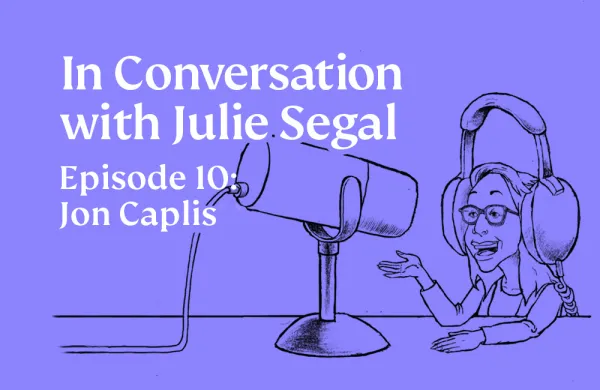It’s one of the oldest patterns in investing: a strategy stumbles, investors question whether it’s broken, they flee, and then it comes back to life.
That’s what’s happening now with managed futures, one of the worst-performing hedge fund categories in 2025. After some of the steepest losses in years, allocators are questioning whether the once-reliable diversifier still works — and wondering why they weren’t instead in global macro discretionary funds, one of the year’s top performing strategies.
On the surface, the two strategies look similar. Both aim to protect portfolios when markets unravel. Both trade in global currencies, futures, commodities, and fixed income.
But they work in very different ways. Managed futures, also called commodity trading advisors (CTAs), are systematic and primarily employ trend-following strategies, while human portfolio managers lead global macro discretionary funds, analyzing broad economic, policy, geopolitical and other macro factors.
But “many investors use the two strategies interchangeably,” says Jon Caplis, founder and CEO of hedge fund research firm PivotalPath, despite big differences.
Caplis says this year’s frustration with managed futures — and envy of global macro discretionary’s gains — reflects a deeper, recurring mistake in investors’ behavior, which leads to poor decisions like pulling out of a strategy at the worst possible time.
Paul Zummo, chief investment officer of J.P. Morgan Alternative Asset Management, agrees, adding that “the challenge with both strategies, but especially with CTAs, is ‘can they be there when you need them?’
“To the best of my memory, over 30 years, if you look at money flows into CTAs and out of CTAs, people are broadly wrong all the time. They take money out because [the strategy] hasn’t worked in two years, and they’re piling in after you get dislocation and they’ve made money.”
Although investors often make decisions even when they’ve studied the data ad nauseum, Caplis said an analysis, once manager and survivorship bias is stripped out, of historical data shows that the behavior of these two categories of funds this year isn’t far off from how they’ve performed in the past. PivotalPath’s research platform comprises more than $3 trillion in institutional hedge fund assets under management.
Between 2015 and 2024, PivotalPath's Managed Futures Index and Global Macro Discretionary Index delivered nearly identical alpha — annualizing 3.9 percent and 3.6 percent, respectively, versus the S&P 500 — with similarly low correlation to equities. During that period, on average, the Managed Futures Index had almost no equity exposure; But this was punctuated with periods of significant negative correlation offset by periods of very high correlation, with far more volatility. Global Macro’s exposure to stocks averaged slightly higher, though remained consistently low throughout the entire period. “That’s why it’s confusing to people: Over time it averages to zero,” said Caplis.
When markets turned chaotic, however, the two diverged. During the five worst quarters for the S&P 500 — a cumulative 48 percent drop — the Managed Futures Index gained 11 percent while Global Macro Discretionary rose just 2.4 percent. But in the market’s best five quarters (a 90 percent cumulative rise), the pattern flipped: Macro Discretionary gained 16.6 percent, and managed futures barely moved, up just 0.7 percent.
That history explains this year’s split. Through July, PivotalPath’s Global Macro Discretionary index gained 9.1 percent, while the Managed Futures Index fell 9.2 percent — one of the widest gaps since the 2008 financial crisis, when managed futures beat macro discretionary by 22 percent. (Through September, the Managed Futures index has recouped some losses, down 4.4 percent, while Global Macro Discretionary is up 12.8 percent). “The performance of each strategy is exaggerated relative to history, but directionally not far off from what they’ve done in the past,” said Caplis.
The difference this year comes down to the quirks of machines and humans. Global macro managers were able to quickly pivot when the Trump administration’s April tariff announcements jolted markets, for example. “They could say, ‘I don’t care what the models say — rates are going higher, the dollar’s getting weaker,’” Caplis explained. “They flipped their positioning fast.”
Managed futures funds, by contrast, are built to wait for trends to confirm. “It’s man versus machine,” says Caplis. “The Paul Tudor Jones's of the world can make the call. That doesn’t mean one’s better — but they’re different, and investors need to understand that.”
Zummo adds another layer to the argument. “Even when discretionary macro is not working, I can sit down with somebody, and I think that inherently gives you more comfort — and you’re not questioning whether trend following is never going to work again. The staying power is different.” But he doesn't always prefer humans. J.P. Morgan is a big allocator to statistical arbitrage and quant strategies.
Echoing Zummo's earlier thoughts, Caplis fears that many investors will now abandon managed futures — just as they often do before the strategy rebounds. “They will start pulling their allocations, and then the next time vol spikes and the market sells off like crazy, managed futures will do well — but no one was invested.”
That, he says, is the real lesson of 2025’s “macro divide”: not that humans beat machines, but that investors still struggle to understand what their hedges are for.







